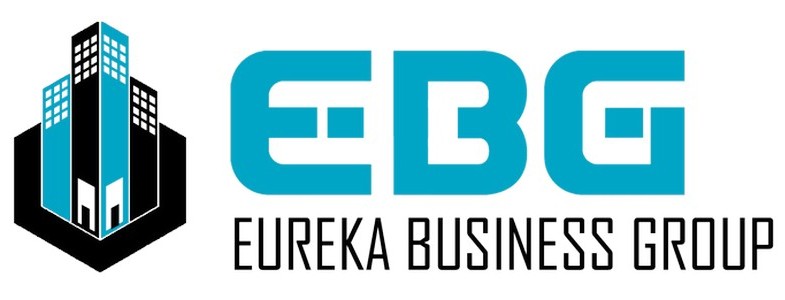- Home
- Industrial
- Industrial Investors Resources
- How to Spot High-Growth Areas for Industrial Flex Investments!
How to Spot High-Growth Areas for Industrial Flex Investments!
Industrial flex properties, which combine office, warehouse, and manufacturing spaces under one roof, have become increasingly attractive to real estate investors. These versatile properties provide flexible layouts and can be adapted to a wide range of uses, making them ideal for businesses in need of both office and storage or production space. The demand for industrial flex spaces has surged, especially with the growth of e-commerce, logistics, and light manufacturing sectors.
For investors looking to capitalize on this trend, the key is to find high-growth areas where industrial flex investments are likely to appreciate. But how do you spot these high-growth areas? In this blog post, we’ll explore the indicators to watch for when identifying regions ripe for industrial flex investments.
1. Proximity to Major Transportation Hubs
One of the most critical factors in the success of industrial flex properties is their location relative to transportation infrastructure. Proximity to major highways, airports, ports, and railways is essential for businesses that rely on the efficient movement of goods. Regions that are well-connected by these transport networks are prime candidates for industrial flex investments.
Investors should look for areas with:
- Easy access to major highways: Companies in logistics, distribution, and manufacturing need to be able to quickly move products in and out of their facilities.
- Nearby airports: Proximity to international or regional airports is crucial for businesses that frequently ship products by air or have international clients.
- Ports and rail terminals: Access to seaports and rail terminals can be a significant advantage for companies involved in importing/exporting goods or bulk materials.
For example, regions like Dallas-Fort Worth, Atlanta, and Chicago have become industrial powerhouses due to their central locations and excellent transportation networks.
2. Growing Demand for E-Commerce and Logistics
The rise of e-commerce has dramatically shifted the industrial real estate landscape. Companies are increasingly seeking strategically located industrial flex spaces to serve as distribution centers, fulfillment centers, and last-mile delivery hubs. High-growth areas are typically those experiencing a surge in e-commerce activity and consumer demand for faster shipping.
When evaluating an area for industrial flex investment, consider:
- The local e-commerce market: Are there major online retailers expanding in the area? Are there new fulfillment centers being built or planned?
- Population growth: Areas with growing populations tend to have increased demand for e-commerce services. More people means more online shopping, which drives the need for local warehouses and distribution centers.
Regions like Southern California’s Inland Empire, Phoenix, and Nashville have seen explosive growth in e-commerce-driven industrial real estate demand.
3. Economic Diversification and Industry Growth
Industrial flex properties thrive in areas with diverse economies and a strong mix of industries. Cities or regions that rely heavily on one industry may be riskier for long-term investment. On the other hand, areas with multiple thriving sectors—such as technology, manufacturing, logistics, and healthcare—tend to be more stable and offer greater growth potential for industrial properties.
When assessing a region’s economic health, look for:
- Multiple strong industries: Cities with a balanced mix of industries are more resilient to economic downturns and offer more opportunities for flex properties to be used in different ways.
- Growing sectors: Technology, biotech, advanced manufacturing, and clean energy are all industries that are expanding and often require industrial flex spaces.
For instance, cities like Austin, Texas, have become attractive markets for industrial flex investments due to their booming technology, biotech, and manufacturing sectors.
4. Business-Friendly Policies and Tax Incentives
Regions that offer business-friendly environments are more likely to attract companies that need industrial flex spaces. This can be in the form of lower taxes, incentives for new developments, or streamlined zoning regulations. States like Texas, Florida, and Tennessee, which have no state income tax, are particularly attractive to businesses and investors alike.
Investors should look for:
- State and local tax incentives: Regions that offer tax breaks for businesses or incentives for industrial development can spur growth in demand for industrial flex spaces.
- Streamlined permitting processes: Areas with less red tape and quicker approvals for construction or development projects are more appealing to companies looking to expand or relocate.
For example, many industrial companies have flocked to states like Nevada and Arizona due to favorable tax structures and business-friendly regulations.
5. Infrastructure Development and Urbanization
High-growth areas for industrial flex investments are often those where infrastructure is improving and urbanization is expanding. Regions that are experiencing significant investments in roads, utilities, and public services are typically more attractive to businesses, as these improvements support future growth.
Signs of infrastructure development to look for include:
- New roadways or highway expansions: Areas where road networks are being expanded are often positioned for growth, as these improvements make it easier for businesses to operate.
- Utility upgrades: Regions investing in power grids, water systems, and high-speed internet infrastructure are more likely to attract modern businesses that require reliable services.
- Urban sprawl: Suburban areas expanding into previously undeveloped regions can create new demand for industrial flex properties as businesses follow population growth.
For example, regions around Houston, Texas, have seen significant infrastructure investments, making them attractive markets for industrial flex spaces.
6. Vacancy Rates and Absorption Trends
Another key metric for spotting high-growth areas is the vacancy rate for industrial properties. A low vacancy rate suggests high demand for industrial space, which can drive up rents and property values. On the other hand, high vacancy rates may indicate an oversupply of space or weak demand in the market.
Additionally, look at the absorption rate, which measures how much industrial space is being leased compared to what’s available. Positive absorption trends indicate that demand for industrial space is outpacing supply, creating opportunities for new developments or investment in existing properties.
Investors should focus on areas where:
- Vacancy rates are low: A low vacancy rate indicates strong demand for industrial space.
- Absorption rates are high: Rapidly increasing absorption rates signal that businesses are moving into the area and that demand is likely to continue growing.
For instance, the Denver metro area has seen a steady decline in industrial vacancy rates, indicating high demand and solid potential for industrial flex investments.
7. Rising Rental Rates and Property Values
Rising rental rates are a strong indicator of increasing demand for industrial flex properties. When businesses are willing to pay higher rents, it reflects a robust market and the potential for strong returns on investment. Similarly, rising property values signal that the market is appreciating and can provide excellent opportunities for capital gains.
When considering an area for industrial flex investments, look for:
- Consistent rental growth: Steady increases in rental rates suggest a healthy market with strong demand for space.
- Appreciating property values: Rising property values indicate that the market is growing and that industrial flex properties in the area are likely to appreciate over time.
Areas like Charlotte, North Carolina, have experienced steady increases in industrial rents and property values, making them prime targets for investment.
Conclusion
Investing in industrial flex properties can be a lucrative opportunity, but the key to success is identifying high-growth areas. By focusing on regions with strong transportation links, growing demand for e-commerce, economic diversification, business-friendly policies, infrastructure improvements, low vacancy rates, and rising rents, investors can position themselves to capitalize on the growing demand for industrial flex spaces.
As you evaluate potential markets, keeping an eye on these factors will help you identify the regions where industrial flex investments are most likely to thrive.



